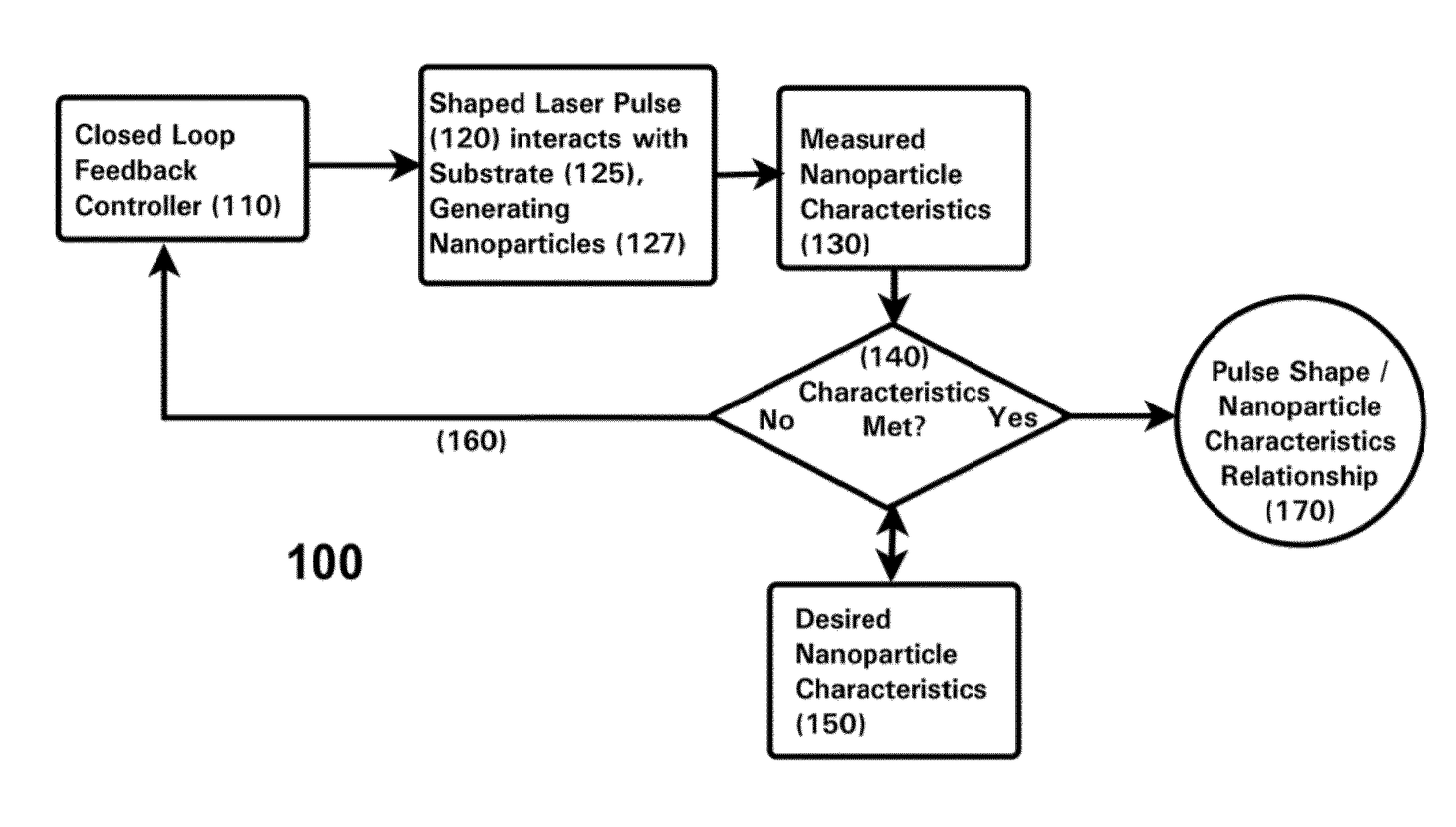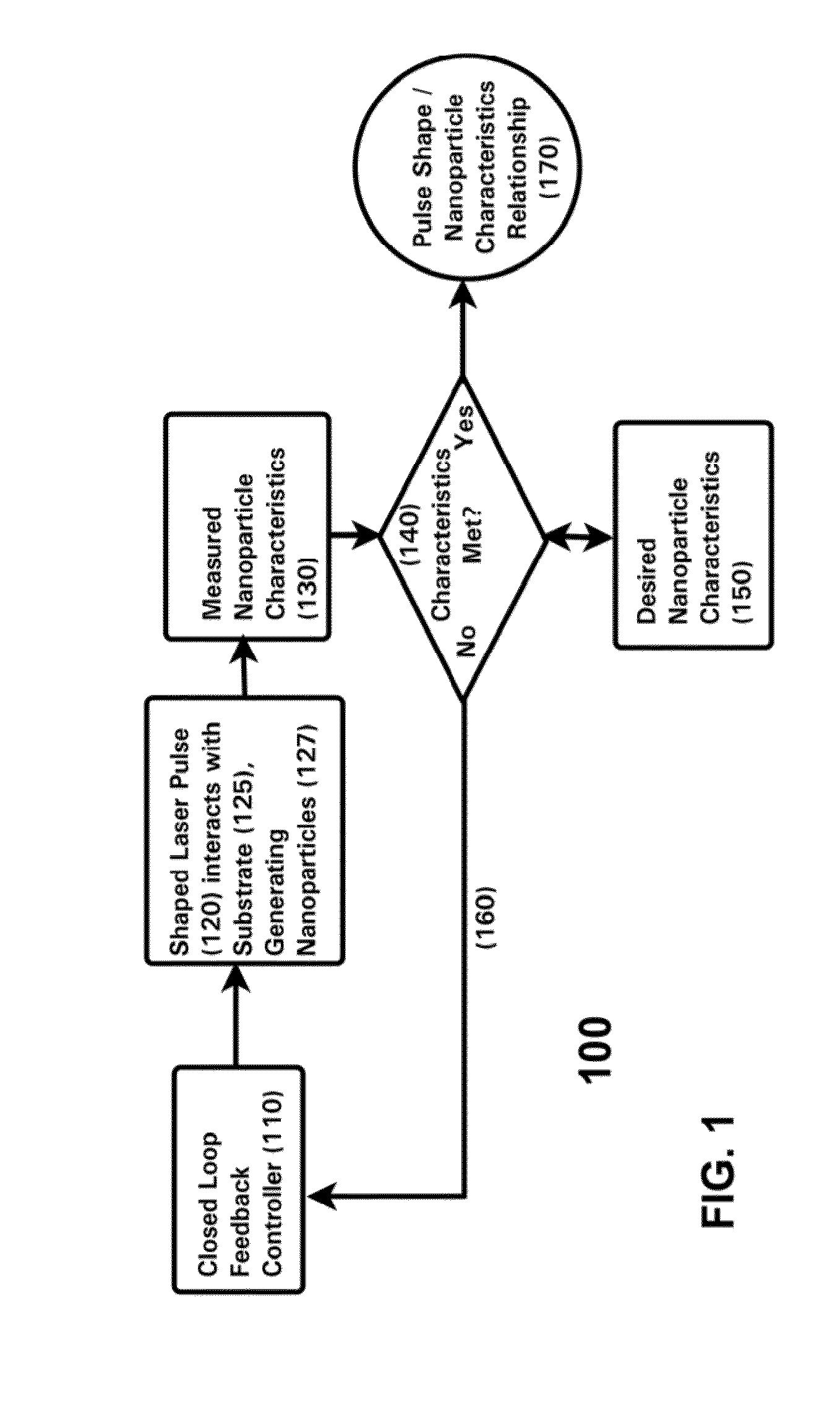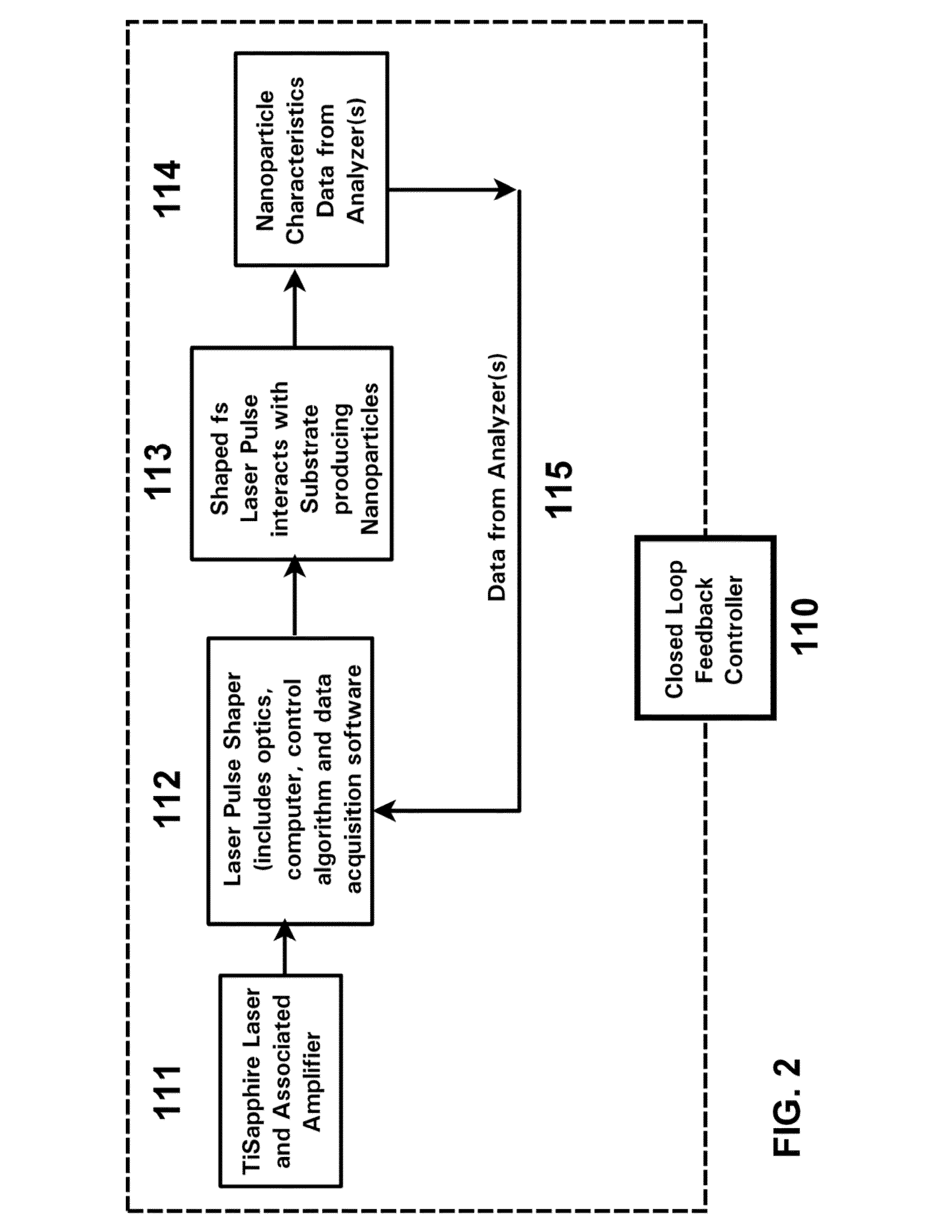Control of particle formation at the nanoscale
a technology of nanoparticles and control tools, applied in the field of nanoparticle production methods, can solve the problems of inability to develop a generalized tool for the production of high-precision nanoparticles, inability to produce at least a fraction of a nanometer, and inability other issues, to achieve the effect of reducing the number of particle sizes, not being logically extended, and not being able to meet the requirements of particle siz
- Summary
- Abstract
- Description
- Claims
- Application Information
AI Technical Summary
Benefits of technology
Problems solved by technology
Method used
Image
Examples
Embodiment Construction
[0032]The method of our invention (100) is provided as a schematic diagram in FIG. 1. Referring to FIGS. 1, 2&3, a closed loop feedback controller (110) provides to a pulse shaper a code for the setting of the numerous channels in the liquid crystal array. A fs laser pulse [310] passes through the pulse shaper whereby having its original pulse shape [310] altered to yield shaped laser pulse [370] which interacts with a substrate [125] generating nanoparticles [127]. The nanoparticle characteristics are measured [130] and compared [140] with the desired nanoparticle characteristics [150]. If the measured and desired characteristics are not equivalent [160], the closed loop feedback controller [110] provides the laser pulse shaper [112] with another (different and distinct) laser pulse shape and the process continues. When the measured nanoparticle characteristics [130] meet the desired nanoparticle characteristics [150] then the process has converged and a relationship [170] between ...
PUM
| Property | Measurement | Unit |
|---|---|---|
| energy | aaaaa | aaaaa |
| energy | aaaaa | aaaaa |
| repetition frequency | aaaaa | aaaaa |
Abstract
Description
Claims
Application Information
 Login to View More
Login to View More - R&D
- Intellectual Property
- Life Sciences
- Materials
- Tech Scout
- Unparalleled Data Quality
- Higher Quality Content
- 60% Fewer Hallucinations
Browse by: Latest US Patents, China's latest patents, Technical Efficacy Thesaurus, Application Domain, Technology Topic, Popular Technical Reports.
© 2025 PatSnap. All rights reserved.Legal|Privacy policy|Modern Slavery Act Transparency Statement|Sitemap|About US| Contact US: help@patsnap.com



